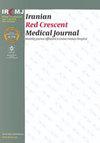Facilitators and Barriers to Donor Detection Based on Hospital Staff Opinions in Different Hospitals
IF 0.2
4区 医学
Q3 MEDICINE, GENERAL & INTERNAL
引用次数: 0
Abstract
ackground: Donor detection is the first step of organ procurement for transplantation, and about 50% of all potential donors are not detected. Objectives: The present study aimed to evaluate the facilitators and barriers to donor detection based on hospital characteristics and staff opinions. Methods: In this cross-sectional study, a 16-item questionnaire was prepared to clarify medical staff opinions about facilitators (10 items) and barriers (6 items) to potential donor detection. The questionnaire was distributed on social networks, and all medical staff members were invited to participate in the study. Results: A total of 230 medical staff participated in this study. From their point of view, the main facilitator was active detection via regular daily phone calls (150, 65.2%), which had the most advocators among medical staff of public (64.1%) and private hospitals (74.5%). Detection by donor coordinators or inspectors tanked the second (103, 44.8%). Moreover, private hospitals highly agreed with detection by donor coordinators and inspectors in 66.7% and 60.8% of cases, respectively. Donor detection by an in-hospital-coordinator was recommended by 42.6% of all 230 participants, with most advocators among those affiliated with an organization (65.4%). Staff opinions about donor selection and care to donor families were important barriers according to 53.5% and 46.1% of subjects, respectively. Conclusion: To identify all potential donors, different strategies are necessary according to hospital characteristics. In public hospitals, daily calls; in private ones, active visits; and in an-organization-related hospitals, in-hospital coordinators could be effective.基于不同医院医务人员意见的供体检测的促进因素与障碍
背景:捐赠者检测是器官移植采购的第一步,大约50%的潜在捐赠者没有被检测到。目的:本研究旨在根据医院特点和工作人员的意见,评估捐赠者检测的促进因素和障碍。方法:在这项横断面研究中,编制了一份16项问卷,以澄清医务人员对潜在捐赠者检测的促进者(10项)和障碍(6项)的意见。问卷在社交网络上分发,所有医务人员都被邀请参与这项研究。结果:共有230名医务人员参与了本研究。从他们的角度来看,主要的促进因素是通过定期的日常电话进行主动检测(15065.2%),这在公立医院(64.1%)和私立医院(74.5%)的医务人员中是最积极的。捐赠者协调员或检查员的检测排在第二位(10344.8%)。此外,私立医院分别在66.7%和60.8%的病例中高度同意捐赠者协调员和检查员的检测。在所有230名参与者中,42.6%的人建议由医院协调员进行捐赠者检测,其中大多数支持者是某个组织的附属机构(65.4%)。53.5%和46.1%的受试者分别认为,工作人员对捐赠者选择和照顾捐赠者家庭的意见是重要的障碍。结论:为了识别所有潜在的捐献者,有必要根据医院的特点采取不同的策略。在公立医院,每天打电话;在私人方面,积极访问;在与医院相关的组织中,住院协调员可能是有效的。
本文章由计算机程序翻译,如有差异,请以英文原文为准。
求助全文
约1分钟内获得全文
求助全文
来源期刊

Iranian Red Crescent Medical Journal
MEDICINE, GENERAL & INTERNAL-
CiteScore
1.16
自引率
0.00%
发文量
0
期刊介绍:
The IRANIAN RED CRESCENT MEDICAL JOURNAL is an international, English language, peer-reviewed journal dealing with general Medicine and Surgery, Disaster Medicine and Health Policy. It is an official Journal of the Iranian Hospital Dubai and is published monthly. The Iranian Red Crescent Medical Journal aims at publishing the high quality materials, both clinical and scientific, on all aspects of Medicine and Surgery
 求助内容:
求助内容: 应助结果提醒方式:
应助结果提醒方式:


